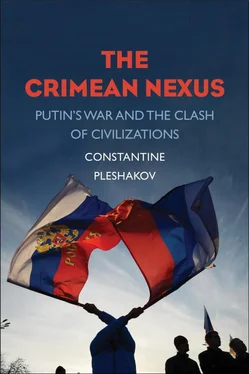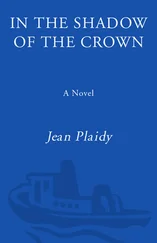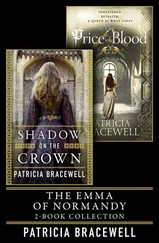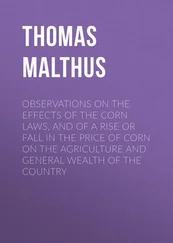In 2015, more than forty private battalions existed in Ukraine. Besides Donetsk and Luhansk, several other areas were controlled by warlords. Among the most colorful was Ihor Kolomoysky, an oligarch commanding at least $3 billion, and a citizen of three countries—Ukraine, Cyprus, and Israel—who spent at least $10 million to create the Dnipro Battalion. He called Putin a “schizophrenic of short stature.” Putin returned the compliment by calling him a “unique crook.” [18] “Pro-Kiev Militias Are Fighting Putin, but Has Ukraine Created a Monster It Can’t Control?” Vox , updated February 20, 2015, www.vox.com/2015/2/20/8072643/ukraine-volunteer-battalion-danger (retrieved May 31, 2015); Alan Cullison, “Ukraine’s Secret Weapon: Feisty Oligarch Ihor Kolomoisky,” Wall Street Journal , June 27, 2014.
The war in the east has been too bloody, too ugly, and too dishonest on both sides for any Ukrainian national unity to be feasible. Even after the bloodshed eventually ends, Ukraine will likely never be able to return to its 2013 borders.
Since the coup in February 2014, Ukraine has conducted two elections. In the first, held in May 2014, Petro Poroshenko won the presidency with 54.7 percent of the votes; the leader of the Orange Revolution of 2004, Yulia Tymoshenko, came in a distant second with 12.8 percent. In the October 2014 parliamentary election, six parties got into the new Rada, the winners being Prime Minister Arseniy Yatsenyuk’s People’s Front, with 22.1 percent of the vote, and President Poroshenko’s party, somewhat tellingly called just Petro Poroshenko Bloc, with 21.8 percent. The Yatsenyuk-Poroshenko alliance began to crumble almost immediately. The government formed in November 2014 included three foreigners, one of whom could neither speak nor understand Ukrainian. The post of the minister of finance went to the American investment banker Natalie Jaresco, whose only qualifications for the job seemed to be Ukrainian roots and past employment with the U.S. Department of State. In May 2015, Poroshenko equally inexplicably appointed the former president of the Republic of Georgia, Mikheil Saakashvili, as the governor of Odessa Province. [19] Glenn Kates, “Ten Takeaways from Ukraine’s Vote,” Radio Free Europe/Radio Liberty, October 27, 2014, www.rferl.org/content/ukraine-vote-takeaways-things-we-learned/26659694.html (retrieved October 29, 2014); Leonid Bershidsky, “Ukraine’s Truly Foreign Ministers,” Bloomberg, December 3, 2014, www.bloombergview.com/articles/2014-12-03/ukraines-truly-foreign-ministers (retrieved May 31, 2015); “Ukraine Names Ex-Georgian President Saakashvili as Odessa Governor,” The Guardian , May 31, 2015.
With each faction accusing others of corruption, the infighting mounted, resulting in ugly public brawls in the parliament and cabinet meetings. To Moscow’s immense satisfaction, in February 2016 the Poroshenko-Yatsenyuk coalition collapsed.
All sides in the escalating power struggle appealed to the Ukrainian street, making another violent insurgency possible. Two years since Maidan, Ukraine had more factions and more fanaticism, and its prospects for nation-building were in decline. Putin’s Kremlin couldn’t be happier with the results.
Ukraine may be turning into another Yugoslavia, a young state that cannot survive except as a dictatorship. Both Ukraine and Yugoslavia belong to the category of artificial entities formed by foreign leaders: Yugoslavia at the Paris Peace Conference of 1919, Ukraine by Lenin in 1922. In both countries, people spoke a spectrum of dialects, the official language a sort of linguistic median. Both were also divided along religious and cultural lines. Iosip Broz Tito held Yugoslavia together; a viceroy appointed by Moscow did that for Ukraine. But absent its strongman and outside a Cold War context, Yugoslavia was not a coherent nation. Neither is Ukraine, and this is the ultimate cause of the present civil war.
Peace in Ukraine at the initial, promising stage of nation-building between 1991 and 2013 was made possible by the precarious balancing act of all four of its presidents, including the “pro-Western” Yushchenko and the “pro-Russian” Yanukovych. The February 2014 coup (call it a revolution if it makes you feel better) threw the country off balance, and the submerged interregional tensions surfaced with a boom.
On December 4, 2014, in his equivalent of the State of the Union address, Putin summed up the party line on Crimea. As befits a national fetish, the language he applied to the annexed territory was metaphysical. Referring to the semi-legendary baptism of Prince Vladimir in Chersonesus, he called Crimea the “spiritual foundation” of the Russian state. For Russia, Putin announced, Crimea had “an enormous civilizational and sacral meaning. Just like the Temple Mount in Jerusalem for those who practice Islam or Judaism.” [20] “Poslaniye presidenta Federalnomu Sobraniyu. 4 dekabrya 2014 g.,” Kremlin.ru, December 4, 2014, http://kremlin.ru/news/47173 (retrieved January 9, 2015).
The allusion was new, idiosyncratic, and strange. For starters, clashes over the Temple Mount in Jerusalem have become an epitome of an unending conflict. Perhaps appropriately, the first federal investment in Crimean sacral grounds was an army group. Tanks and armored vehicles were ferried across the Kerch Strait with praiseworthy efficiency, up to fifty a day—an accomplishment given the sad state of the ferries.
In November 2014, the Russian Ministry of Defense confirmed that it had deployed a squadron of thirty jet fighters to Belbek air base. NATO’s commander, General Philip Breedlove, in Kiev at the time, said that the ongoing Russian “militarization” of Crimea would have an effect on “almost the entire Black Sea.” [21] “Nato Commander Warns Russia Could Control Whole Black Sea,” BBC, November 26, 2014, www.bbc.com/news/world-europe-30214172 (retrieved November 26, 2014).
In the 1950s–1960s, Taiwan was called the unsinkable U.S. aircraft carrier. Was Crimea about to become Russia’s aircraft carrier?
The annexation of Crimea has changed the balance of power in the Black Sea. Under the terms of the United Nations Convention on the Law of the Sea of 1982, Russia now claims an exclusive economic zone along the peninsula’s coastline—an avenue for underwater pipelines and a repository of fossil fuels. Ukraine, dispossessed, is losing its role as a transit corridor between Russia and Europe.
The Russian Black Sea Fleet had been stationed in Crimea before, as were some Russian air force units. With the annexation, the air force presence expanded; Russian ground troops, tanks, and armored personnel carriers arrived; the Russian military established a new army group on the peninsula. Russian ground troops now surround Ukraine from the north, east, and south. Just 450 miles separate the army groups in Crimea from those in Bryansk, across Ukraine’s northern border. If they advanced simultaneously, the two could touch in central Ukraine within days. Along the Black Sea coast, the shipbuilding facilities of Ukrainian Mykolaiv are just 100 miles away from the Russian army group in Crimea; Odessa is 75 miles farther west; 25 miles more, and one is in Moldova.
With Russia having gained in the strategic balance, the influence of every other Black Sea nation, including Turkey, has shrunk. The United States and NATO have lost some of their clout in the eastern Mediterranean and the Middle East. To make this clear, in May 2015 Russia and China held their first joint naval exercises in the Mediterranean.
As the naval base at Sevastopol had been the focal point of the Russian Crimea myth and a major goal of the annexation rush, now the Black Sea Fleet found itself the center of attention. It also found a new role: intimidating every other Black Sea nation, as none is Russia’s friend. Turkey, Bulgaria, and Romania are NATO members; Ukraine and Georgia have begged for membership. Another mission became Russian warships’ regular visits to Syria, bringing arms to Moscow’s friend Bashar al-Assad.
Читать дальше












